Nuremberg
Sensational inheritance
In museum work, sometimes the little things bring the greatest joy. A special highlight for the DB Museum was hidden behind a letter from the Frankfurt district court announcing a completely unexpected inheritance.
Servicecenter
Monday to Friday 9 am to 1 pm
(except on public holidays)
Tel: +49 800 32 68 73 86
A few days later, the post brought an inconspicuous box with golden hinges - a cigar box. Inside was not the tobacco legacy of a misguided testator, but a small sensation: looking out from inside was William Wilson, the legendary driver of the Adler locomotive on Germany's first railroad between Nuremberg and Fürth. Before his death, his great-great-grandson had instructed that the painting should now find its place in the DB Museum after 184 years in the family's possession.
From a porcelain painting, William Wilson looks at us with bright blue eyes and flushed cheeks. He is wearing typical men's clothing of the time, with a starched patricide collar, voluminous collar and tails - just as he stood on the eagle. In the background, a window shows his place of work: in front of Nuremberg Castle, an avenue of poplars indicates the route of the Ludwigs-Eisenbahn. Wilson is depicted in a very small format, the picture field measures just seven by five and a half centimetres. Such formats were considered particularly intimate and were therefore highly prized gifts - obviously also in Wilson's family.
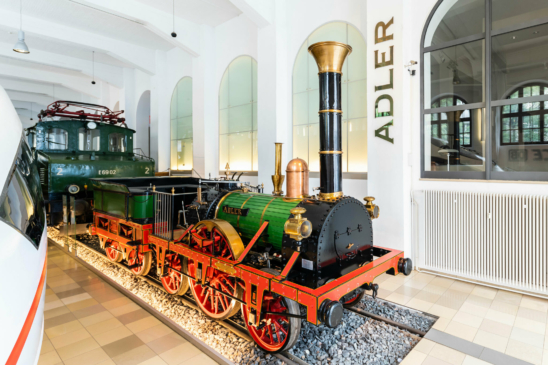
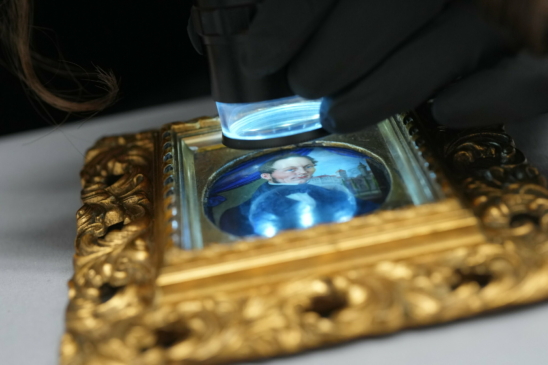
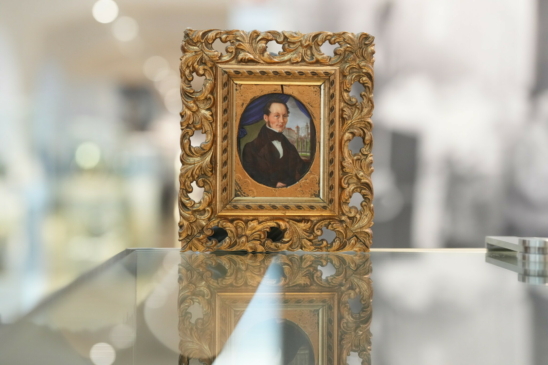
William Wilson came to Nuremberg from Newcastle on the Adler in 1835. Despite his youth, he was already a valued employee at Robert Stephenson and Company, the world's first locomotive factory. At the request of the Ludwigs-Eisenbahn-Gesellschaft, Wilson accompanied the Adler on its seven-week journey from northern England to Franconia. There he not only supervised the assembly of the locomotive, but also trained train drivers - there were still none in Germany. After the transport crates arrived, Wilson assembled the locomotive in the workshops of Johann Wilhelm Spaeth on Nuremberg's Dutzendteich, completed test runs and officially opened the first line on December 7, 1835. From then on, Wilson ran the Adler from Nuremberg to Fürth and back twice a day. Although he also ran a workshop and was responsible for repairs, he had no desire to return home at the end of his eight-month stay - he had already become a crowd favorite. Wilson, also known as the "long Englishman" due to his impressive appearance on the locomotive, fell seriously ill in 1842 and died in 1862 at the age of 52.
Although Wilson was not allowed to marry as a foreigner, he was married to a woman from Nuremberg and had a daughter. She married into the Nudinger family, whose tomb in St. John's Cemetery still bears an epitaph commemorating Wilson today. For his family, the small portrait that shows Wilson so vividly will certainly have been the more important memory - after all, his descendants, most recently in Bad Vilbel in Hesse, kept it for five generations.
The porcelain painting is currently in the collection of the DB Museum and cannot yet be seen in the exhibition.

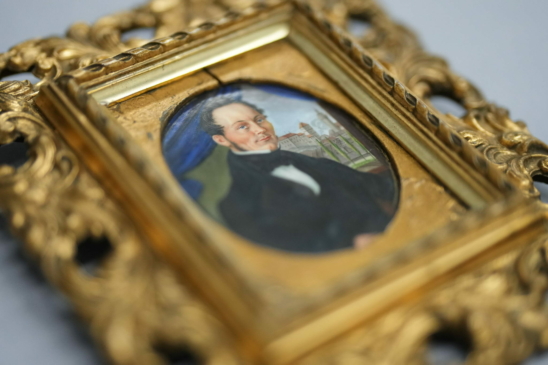
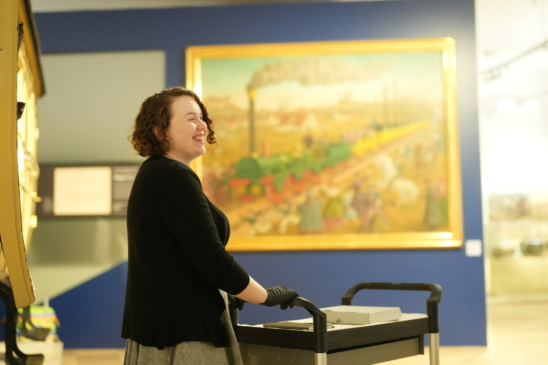
Copyright photos:
DB Museum/ Uwe Niklas
Deutsche Bahn Foundation/ Oliver Lang
Download our App
Visit the DB Museum
Address & Information desk
Deutsche Bahn Stiftung gGmbH
DB Museum
Lessingstrasse 6
90443 Nuremberg
Opening hours
Tuesday to Friday 9 to 17 o'clock
Saturday, Sunday, holidays 10 to 18 o'clock
Monday closed
Admission prices
| Adults | 9 € |
| Families (2 adults and up to 4 children) | 18 € |
| Children (aged 6 to 17) | 5 € |
| Reduced price | 7 € |
| School classes (per person up to and including 13th grade) | 3 € |
| Children up to 6 years of age | free |
| Current DB employees | free |